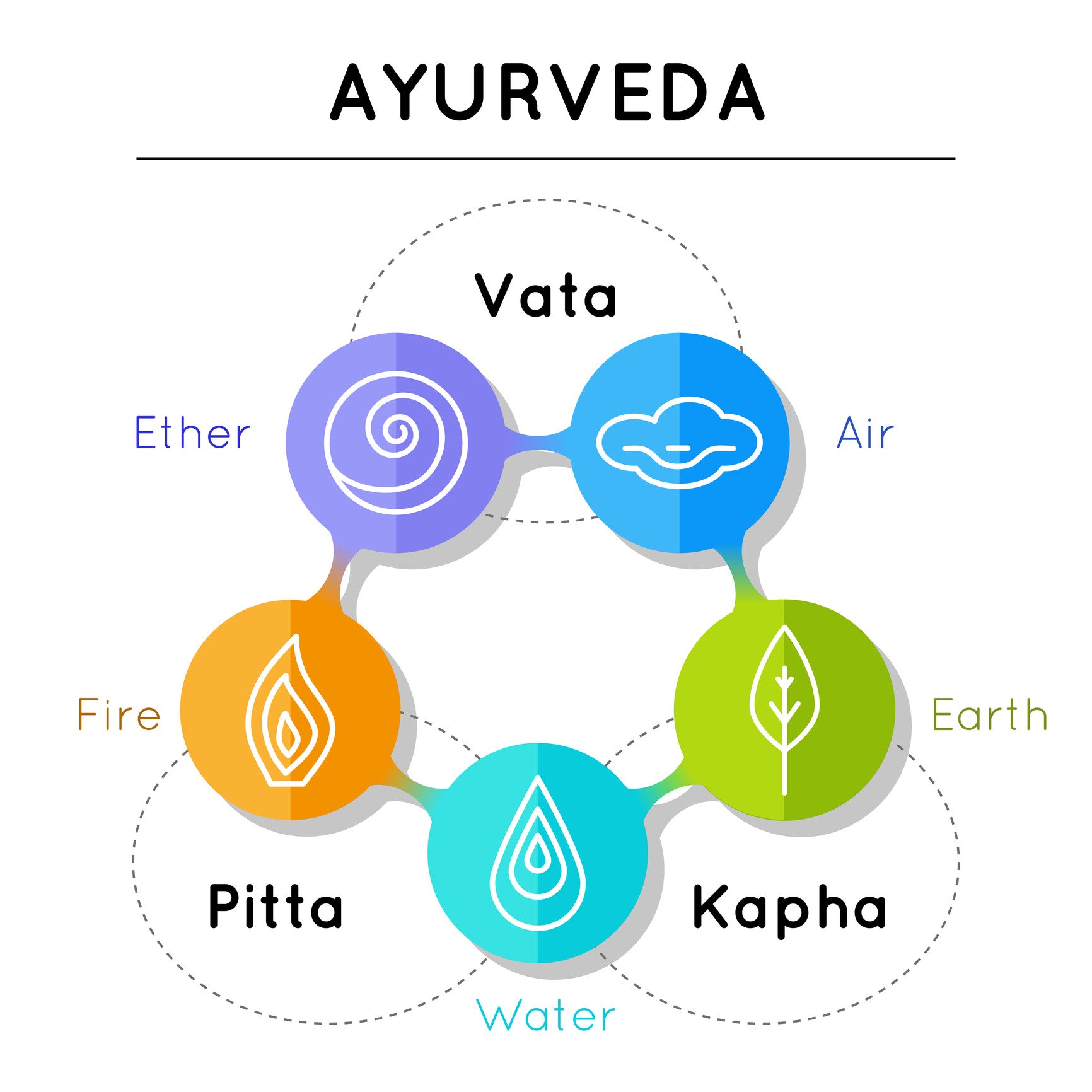What is Ayurveda? You may have heard that word on TV,or seen it in ads, perhaps in something related to Deepak Chopra or Dr. Oz. Well, perhaps you’d like to know a little bit more about the world’s oldest healthcare system.
It comes from India, is over 5,000 years old, and is the 3rd largest health care system in the world. The word Ayurveda is a Sanskrit word and is generally translated as “The Science of Life.” Much like the European Humors, Ayurveda looks at disease in terms of the Doshas, or elements at work in the body.
There are 3 Doshas in Ayurveda:
Vata- The elements of air and space. This dosha is the “King Dosha” for it is the most easily disturbed, and the most important to placate. The other 2 doshas will naturally remain balanced so long as Vata remains relatively pacified. Vata rules over the mind, the senses, the circulatory system, the joints, and all the processes of elimination. Anything that moves in the body is moved by the Vata Dosha. Vata’s nature is cold, hard, dry, light, and coarse.
Pitta- The elements of fire and water. Pitta is the body’s ability to digest and transform, it’s the heat and engine that keeps you going. This dosha rules over digestion, the blood, skin, eyes, the intellect, and the emotions in the body. Pitta is sharp, hot, sour, and pungent. Pitta is closely linked with Agni, the digestive fire, and the state of one's Agni is critical in the Ayurvedic approach to good health.
Kapha- The elements of earth and water. This dosha is an interesting one, when it is balanced the body is strong, vital, joyful, and at peace. When balanced, kapha is the source of what Ayurveda calls “Ojas”- which is the well of all the good things listed above and so much more. When Kapha is out of balance, it becomes what Ayurveda calls “Ama” or toxins in the body. Ama is the source of all malady and disease. Kapha is your strength, your fortitude, your sturdiness in both mind and body, your foundation, and your sense of joy and happiness. Kapha is sticky, heavy, soft, sweet, and unctuous.
When Ayurveda seeks to assert balance in your body and life, it looks at what is out of balance. Digestion is the root of good health, so Ayurveda looks to Pitta and says, “Is there too much heat in the stomach causing heart burn? Or is digestion weak and we need to rekindle the fire?” If a person eats foods that are similar in qualities to Pitta, then those elements in the body become aggravated. Ie. Hot spicy foods can cause heart burn. Too much heavy food or sweet food aggravates kapha and the person gains weight. Cold foods or hard foods aggravate Vata and it may become more difficult to have a bowel movement, or it can cause the mind to become unsettled.
Ayurveda will also look at the balance of Ama and Ojas in your physiology. If there is much Ama, or toxins, in the body the person may become sick easily, be tired, have various health concerns, be stressed, have trouble sleeping, and a general lack of well-being. The goal is then to decrease the Ama through diet and cleansing while increasing Ojas. Ojas is life’s sweetness and joy. It is immunity against physical, mental, and emotional ailments. It is youthfulness, vitality, and harmony. Something everyone enjoys in life!
Working with an Ayurvedic Consultant or Practitioner can help to bring your life into greater balance. Whatever it is in your life- something like diabetes or cholesterol, or simply hair loss, and seasonal allergies- Ayurveda has diets, teas, herbs, and cleansing programs to help. Practitioners and consultants work to get to know YOU, your life, and develop a plan that fits you personally. In some cases, this may require a commitment and multiple visits, while others are more simple. Whatever the case may be, try a little Ayurveda next time you’re feeling out of harmony!





